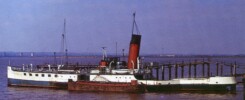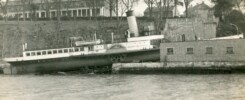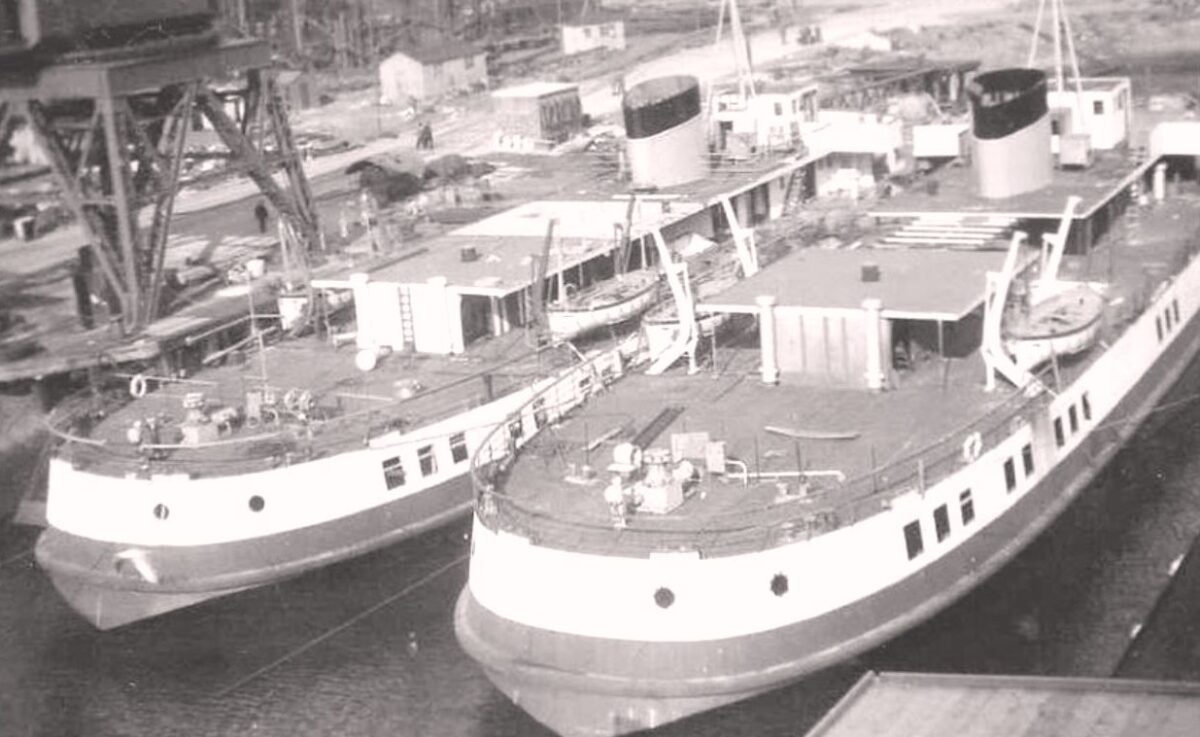
On Monday 15th March 1948 Brading and Southsea were in the fitting out basin at the Denny shipyard at Dumbarton on the Clyde having been launched the previous Thursday 11th March. They had originally been ordered by the Southern Railway but by this time that had been taken over and absorbed into the giant conglomerate which was British Railways. They were intended to run on the railway connection between Portsmouth and Ryde for up to 1,300 passengers plus some cargo which could be loaded aboard through a hatch on their foredecks.
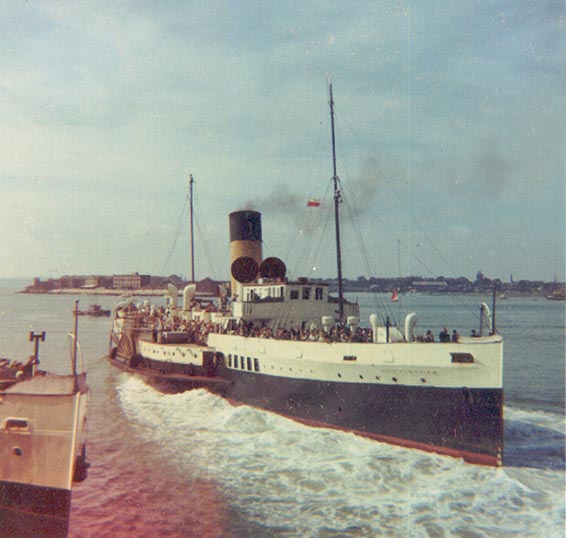
They were built to replace Whippingham’s sister Southsea which had hit a mine and sunk on 16th February 1941 off the Tyne and…

Portsdown which had also hit a mine in her case in the Swashway on the early morning run from Portsmouth to Ryde on 20th September 1940.
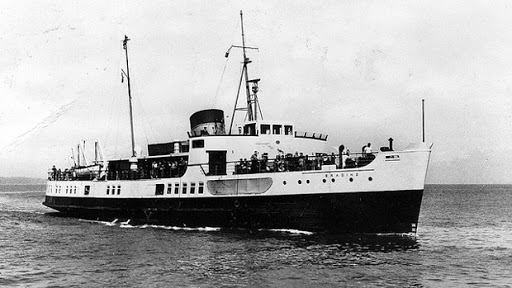
Brading and Southsea were 200ft LOA and had a massive beam for their length of 46ft only 8ft less than their future running mates paddle steamers Ryde and Sandown which measured 52ft in the beam across their paddle boxes.
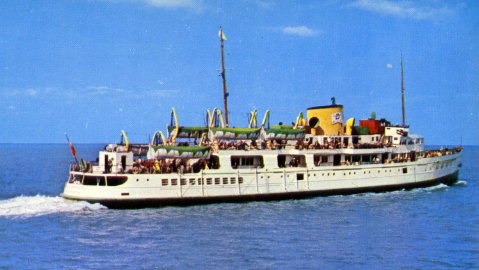
In March 1948 the Denny yard was very busy churning out ships and had eight on the go including the large Irish sea ferry Innisfallen for the Fishguard Cork route, four paddle steamers for the Irrawaddy Flotilla in Burma and a new Royal Sovereign for passenger service on the Thames.
Southsea was the first to be completed and left the yard on 14th September. Brading finally got away on 1st November.
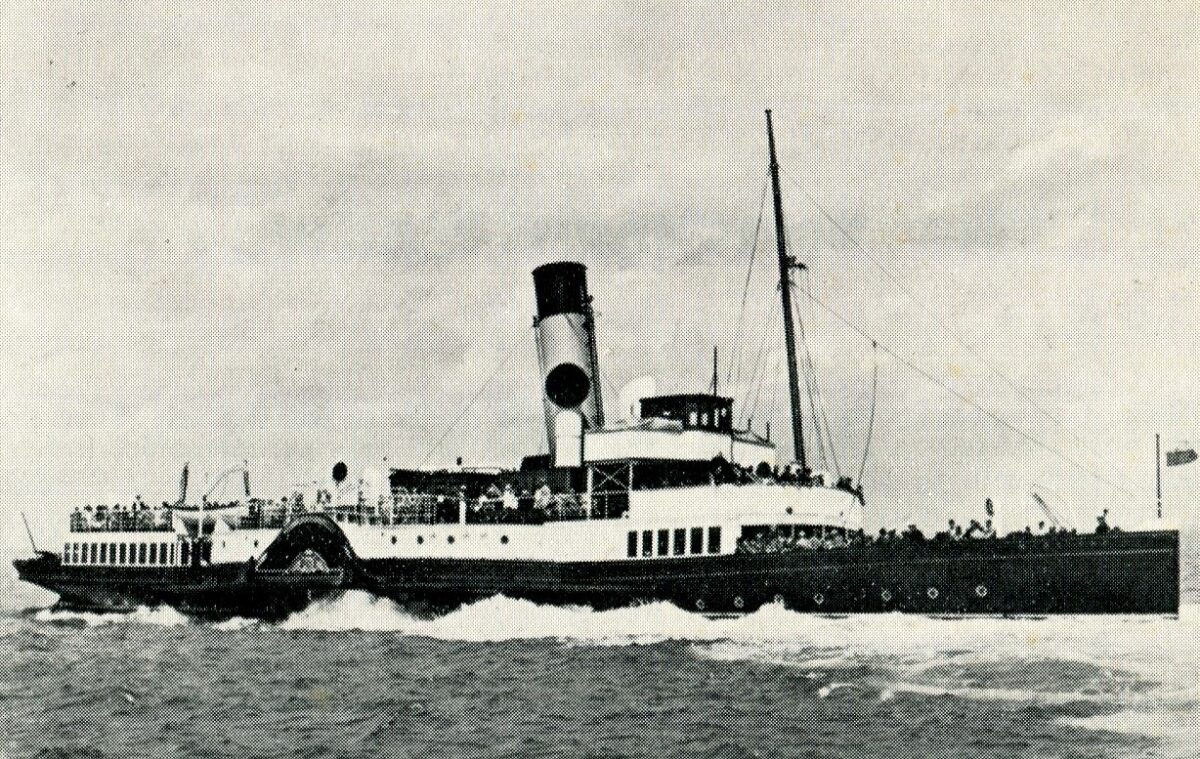
Their arrival at Portsmouth also sort of made redundant Merstone as the fleet now comprised seven ships Ryde, Sandown, Whippingham, Merstone and Shanklin plus the new Brading and Southsea. And apart from exceptional peak summer Saturdays there was not really business there for more than six. Merstone was though kept in reserve and not scrapped until 1952 when she finally departed for Newhaven to meet her fate.
One evening on KC in the early days on a charter from Tilbury for a nautical association one of the passengers came up to the bridge and told me that he had been one of Merston’s masters after the war and that he had very much enjoyed sailing on the route and the challenge of going in and out of piers umpteen times a day throughout the tidal cycle. He had applied for a job with the railway as mate with a Home Trade mate’s ticket. They were short of a captain so as he had the necessary sea time they put him through the training and exam for him to upgrade to Home Trade master and he was off.
On that same night there was some rather over convivial not to say raucous entertainments going on with some segments of the passengers in the aft saloon. There was a certain amount of general merriment at the end as passengers went ashore. Then I noticed a middle aged lady going up the gangway something the worse for drink carrying one of our paddle steamer pictures under her arm which had been screwed onto the bulkhead in the aft saloon. I smiled politely and quietly took back possession of it. Sometimes sailing with passengers can be hard.
Kingswear Castle returned to service in 2023 after the first part of a major rebuild which is designed to set her up for the next 25 years running on the River Dart. The Paddle Steamer Kingswear Castle Trust is now fund raising for the second phase of the rebuild. You can read more about the rebuilds and how you can help if you can here.
John Megoran
This article was first published on 15th March 2021.

